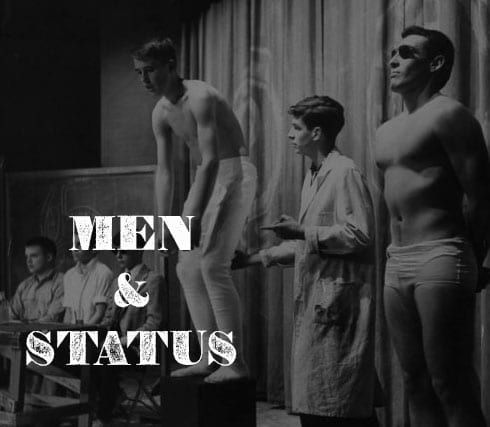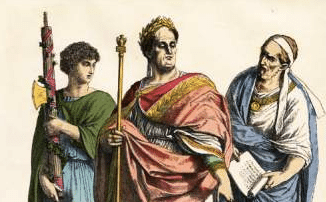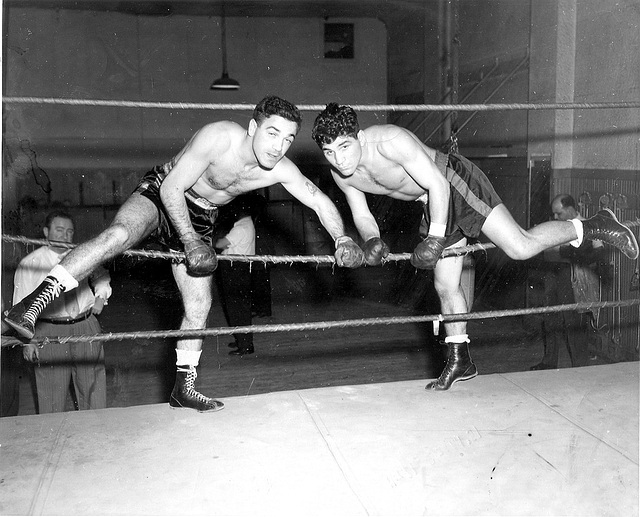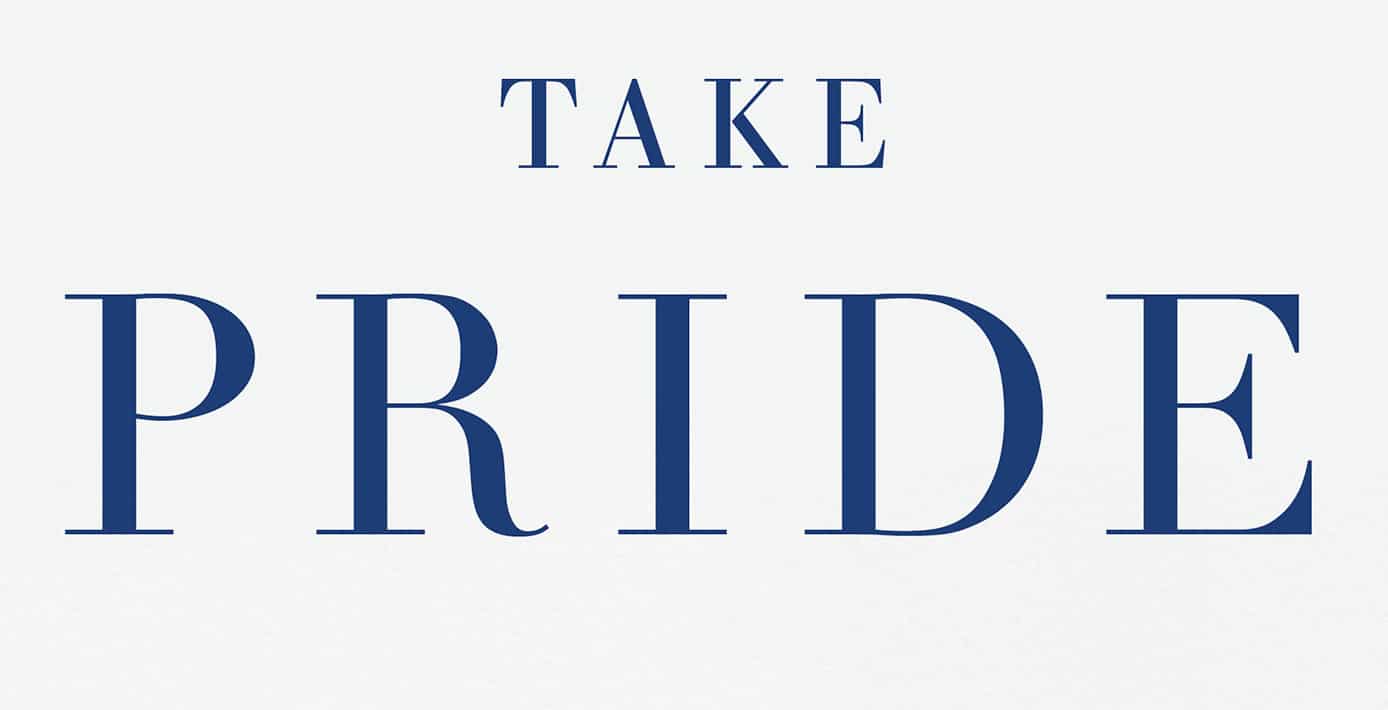Welcome back to our series on male status. This series aims to help men understand the way status affects our behavior, and even physiology, so we can mitigate its ill effects, harness its positive ones, and generally get a handle on how best to manage its place in our lives.
In our last two posts, we discussed the various biological and neurological responses both animals and humans experience in response to gains and losses in status. For example, feel-good neurochemicals and hormones like serotonin, dopamine, and testosterone rise when we experience a gain in status, but fall when we lose it.
But why do we supposedly logical and rational human beings have these automatic reactions to status in the first place? Why do we have these visceral reactions even when we try our hardest to be indifferent to the opinions of others?
The answer is simple: for millions of years, status has been vital to the survival and reproductive success of all animals, including our own prehistoric ancestors.
Social status doesn’t play as direct and concrete a role in determining whether modern Western humans survive and thrive, but though the landscape has changed, our wiring hasn’t. The reason you feel like crap when someone ignores your text messages? Being attuned to how others sized you up once meant the difference between life and death. The reason it stings when someone calls you a coward? Even just a few centuries back, being known as a risk-averse wimp was a guaranteed way of becoming a genetic dead-end.
In today’s post, we’re going to take a look at the biological evolution of status and how an animal’s sensitivity to it helps determine its chances of survival and reproduction. While humans are a unique species, there are many parallels between the behaviors of other creatures and ourselves — similarities that show that far from being a cultural construct, status-seeking is a nearly universal part of the biological fabric of this world.
Status and Survival
Dominance hierarchies are found all throughout the animal kingdom. You’ve probably heard about the term “pecking order.” Well, the saying has a quite literal origin: when a group of chickens gets together, they’ll start pecking each other based on status. The alpha chicken will peck the beta chicken, and the beta chicken will peck the gamma, and the gamma will peck the delta, and so on until you get to the chicken at the bottom of the totem pole. Chickens are not alone in this behavior; if there isn’t enough room for them to spread out and have their own territory, even typically independent, lonesome lizards will establish dominance hierarchies. As you move into mammal species like rats, monkeys, and humans, you start to see the formation of more and more complex and dynamic status structures.
Yet no matter the size or the complexity of these ranking systems, what they all have in common is that the hierarchies typically determine resource allocation, with the animals at the top of the hierarchy getting more and better food than the animals at the bottom. Consequently, the animals at the top of the heap are more likely to survive because they have more access to food.
You can see how this dynamic plays out by looking at a group of newborn mammals, such as pigs, that are trying to suckle on their mother’s teats. A mother’s most productive teats – the ones that offer the most abundant and nutrient-rich milk — are located closest to her head. The teats near the hind legs, on the other hand, produce less and more watery milk. Thus, during the first week of a pig’s life, there’s a constant fight between siblings to get at the primo forward nipples. Very quickly a “teat order” is established with the stronger and more dominant piglets suckling on the front teats, and the weaker and more passive piglets feeding on the rear teats. Once this order is established, there isn’t much fighting by the underling pigs to change it. There are no runt revolutions. And the sow doesn’t do anything to make sure all the piglets get an equal chance to suckle on her best teats either. She just lies there and lets this natural sifting take its course. In fact it’s common for the runts of the farrow (a litter of pigs) to die a few weeks after birth due to lack of nutrition.
Even after nursing animals have weaned, similar dominance orders are established when they live close to neighbors of the same species. The bigger, more dominant animals will get first dibs on the food, while the smaller, more passive ones will hang back and wait until the alphas are done eating.
Not only does status determine food allocation, it also determines where an animal can place itself physically within its tribe and where it can stand or sit. And this positioning can have huge survival repercussions. For example, in herd animals, like cows, standing near the periphery of the herd leaves a cow vulnerable to attack from predators, while standing near the middle offers a bovine an ample perimeter of protection.
Guess which cows get to stand near the center? That’s right, the dominant cows.
Thus, dominant behavior promotes survival by rewarding its practioners with food and safety. Just as in humans, whenever an animal experiences a gain in status, their dominance-seeking behaviors are reinforced by the release of serotonin and testosterone, spurring them to engage their fellows in further contests.
“I Get By With a Little Help From My Status….”
It makes sense that dominant animals would like this arrangement. They get the food they want and get to stand in the safest spots. But why do lower status animals go along with it? That is, why do submissive animals submit?
For us modern humans, the word “submit” carries the connotation of being a passive loser. But in the natural world, knowing when to submit carries important survival benefits. If a smaller and weaker animal tried to fight a bigger and stronger animal every time it wanted the best food, that small, weak animal would likely end up either severely injured or dead.
That’s not good for survival.
So weaker animals resign themselves to their place in the pecking order. While they might not get first dibs at the good food or may have to stand in a place that makes them susceptible to a predator attack, they still get the benefit of being part of the group. They’d be more likely to die if they decided to buck the system, go their own way, and face the dangerous world all on their own.
Nature helps quell an animal’s rebellious impulse and induces passivity by lowering its serotonin and testosterone in the face of status defeats; while this kind of enforced docility sounds kind of sad, it helps the animal live another day and thus hopefully pass on their DNA. (It’s important to reiterate something we’ve noted previously in the series, that while a male’s lowered T/serotonin levels increase his submission, when these chemicals dip too low, he may lash out in aggressive and destructive ways.)
Submission also helps the dominant animals out — and not only because they get more of a group’s resources. Instead of having to fight all the time, dominant animals can let their guard down a bit in front of their peers because they know they’re not likely to be attacked.
Thus, thanks to dominance hierarchies, animals can, for the most part, live together in groups with little conflict. It’s difficult for any community to function when there are too many chiefs and not enough braves. With a pecking order, every animal knows its place and will go along to get along. In animals with smaller cerebral cortexes, once the dominance order is set, it doesn’t change all that much. For example, barring the death of a higher status chicken, the hierarchy of chickens stays about the same. There aren’t any proletariat chicken revolts.
But with higher-order animals, like monkeys, the status hierarchy is subject to frequent fluctuations. For example, primatologists have observed that chimp troops have “election seasons,” in which the lower status males will band together to violently usurp the alpha male. Once the new alpha male is put in place, the old one begins showing signs of submission, and peace once again descends upon the chimp troop.
Status and Reproduction
So status hierarchies promote survival by giving dominant animals more food and safety while simultaneously reducing conflict. Lower status animals benefit from this arrangement because they get the protection of the pack while not having to fight all the time for food.
But besides survival, status plays an important role in reproduction, and the stakes are particularly high for males. In most animal species, only a few males will have the chance to reproduce, and they’re typically the alpha males. For example, when researchers observed a colony of lion seals for several years, they found that at times, only five alpha males sired more than 50% of the colony’s babies. In some breeding seasons, the top five alpha males were responsible for 90% of the pregnancies.
While elephant seals are the most extreme example of this phenomenon, even in primates, you see similar disparities. In one chimp colony, researchers discovered that the group’s alpha male sired 36% of offspring, while the other dominant males sired another 14%. In other words, the chimps at the top of the totem pole accounted for half of the children born in the colony.
The same sort of imbalance exists among humans. While most cultures today embrace monogamy, in the distant past, polygyny was the norm and only the men at the top of the status heap had a chance to reproduce. In fact, anthropologists and evolutionary biologists estimate that only 33% of our human ancestors were male.
Because not every male will get the opportunity to reproduce, and because the chances of siring children are much greater for those on the top of the hierarchy, males across animal species are far more driven to seek status than females.
Females Invest in Parenting; Males Invest in Mating
Evolutionary biologists have noted that across animal species, the sex that invests more in parenting will be more risk averse and less interested in status, while the sex that invests the most in mating will be more competitive and sensitive to status. And with only a few rare exceptions, females across animal species invest more in parenting than males, while males invest more in mating.
This divergence in parental investment begins even before conception. The female egg is much larger than the male sperm. The reason that it’s so large is because besides containing chromosomal information, eggs are also embedded with the material needed to nurture the zygote that forms after fertilization by the sperm. The egg’s size comes at a high cost in energy, and as a consequence, females don’t produce many of them compared to the number of sperm cells a male can produce. In a human female, for example, only 300 to 500 eggs will develop to maturity over a woman’s reproductive lifetime.
A human man, on the other hand, will produce 525 billion sperm over the course of his life. Sperm are also far smaller than eggs because they don’t contain any material to assist in nurturing and feeding a zygote. They only contain chromosomes and mitochondria to power the movement of the sperm. Because they’re so small, they don’t cost as much energy to create compared to an egg. Consequently, new male sperm is produced all the time and a male can create them every day over his lifetime. A single ejaculation from a human male contains 180 million sperm. All of this is to say, that when it comes to the dance of reproduction, eggs are more “precious” than sperm, and females make a larger investment of themselves in the process even before the embryo is fertilized.
After conception, the discrepancy in parental investment between males and females begins to widen even more. In most animal species, the male’s job is essentially done after he’s contributed his seed; the female’s work, however, is just beginning. Growing an embryo, which will eventually develop into a fetus, takes a toll on a female’s body. The body must expend much more energy to aid in the growth of the fetus. After birth, the mother continues investing in the offspring by nursing it with milk produced in her body.
Depending on the animal species, the parental investment females have to make during pregnancy and after birth effectively takes them off the mating market for several months to more than a year. Consequently, it’s in the reproductive interest of females to be pretty choosy about the males they mate with. If it costs them so much to reproduce, they want to make sure that they mate with the very best. Besides having good genes, some female mammals look for partners that can provide protection and resources for their offspring. For example, female chimps will want to mate with an alpha male because he’ll have access to more food for her and her offspring.
Males, on the other hand, can continue reproducing after impregnating a female. Because sperm is expendable and plentiful, and their investment in parenting is small, it’s in the interest of males to cast their seed as far and wide as possible with as many females as they can. Yes, males are also interested in the genetic fitness of their mates, so they’ll be competing with other males for the choicest females, but they’ll be trying to go after as many genetically fit females as they can. Males care about both quality and quantity, with a greater emphasis placed on the latter category.
This combination of female choosiness and male promiscuousness results in a winner-take-all reproductive market. Because females are picky about who they’ll mate with, males must fiercely compete with one another to be picked by a female. The males at the top of the status hierarchy can sire offspring with numerous partners, shutting out the less genetically fit males from fathering any offspring at all.
And thus we see why males of a species are generally more status driven than the females. Almost every female will become pregnant at some point. But if a male doesn’t or can’t strive for status, he may not reproduce, and will become a genetic dead-end.
That status drive is largely centered on reproductive competition explains many of the traits that we associate with males (including of the human variety) like risk-taking, physical strength, and larger physical size. Whatever traits aid in male–male competition will become exaggerated over evolutionary time, even if those traits are energetically expensive and put the male at risk of losing its life. The male peacocks’ feathers are the best example of this. Creating that huge plume requires a lot of nutrients. What’s more, having that giant plumage makes them more noticeable by predators. If survival were their main drive, male peacocks would forgo these flashy tails for something a little more discrete. But because females use male peacock tails in mate selection, the male peacocks keep growing those big, bright tails. Antlers on deer and moose are another example. Typically, stags with larger antlers are selected by does. But antlers require a lot of food to grow and if they get too large, can reduce mobility. So antlers help in the mating game, but come at a cost to the male. Yet the male is willing to pay this price to be an alpha and pass on his genes.
In primates and humans, males are typically physically bigger and stronger than females. But here again, size and strength come at a cost. Muscle mass requires a lot of calories to grow. What’s more, the elevated levels of testosterone that are required to create more muscle mass reduce the immune functions of males.
The message these costly and potentially handicapping traits signal to would-be mates is this: “I am so fit that I can support this expensive encumbrance, which would kill a lesser individual.”
Conclusion
The above constitutes a rough, thumbnail sketch of the evolutionary and reproductive forces behind the male status drive. Details change depending on the species and even the ecology at a given time. But it should give you a basic understanding of the evolution of status and why animals, particularly male animals, are so concerned with it.
This includes humans of course, but our desire for status is made up of some important nuances and complexities that separate us from the rest of the animal kingdom.
First, while dominance amongst other animals typically comes down to size and strength, humans can gain status not only through physicality but also cooperation and prestige – the mastery of valuable fields of knowledge, adeptness with technology, and displays of creativity.
Second, humans don’t just belong to one community but several, and we can have high status in some parts of our life, but low status in others.
My hope with these first 3 posts in the series was to show how deeply ingrained the status drive is in humans – that it’s not just a social or cultural construct we can wave away and pretend doesn’t exist simply because we’d like it to be thus.
With that fact hopefully very well established, we will now move on to looking at the complexities mentioned above — the cultural adaptations humans have made and continue to make to the ways status is gained and lost. Stay tuned!
Read the Entire Series
Men & Status: An Introduction
Your Brain on Status
How Testosterone Fuels the Drive For Status
The Biological Evolution of Status
The Cultural Evolution of Status
The Rise and Fall of Rebel Cool
A Cause Without Rebels — Millennials and the Changing Meaning of Cool
The Pitfalls of Our Modern Status System
Why You Should Care About Your Status
A Guidebook for Managing Status in the Modern Day
____________________________________________
Sources and Further Reading:







